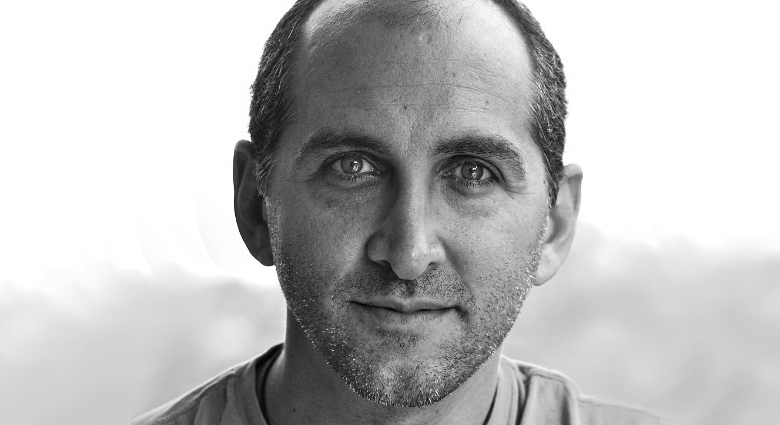Over the last 5 years, we’ve seen the release of a stream of books like Eric Ries’ The Lean Startup that do a wonderful job of systematizing a near-maniacal focus on the customer. Especially assumptions about the customer.
Doing so makes it more likely that you’ll end up building a product and company that serves a genuine need, not just the founder’s own ego or attachment to a particular solution. That, in turn, makes it more likely you’ll “succeed.”
Here’s the formula…
Customer + pain = need.
Need + solution = value.
Value + effective delivery = revenue.
Revenue + bank account = yay!
Yes, I know, I’ve massively over-simplified the process, but you get what I’m saying. Do this, and success will be yours.
So, riddle me this…
Why is there an increasing sea of “outwardly successful” entrepreneurs who feel beaten, battered and bound by the very beasts they’ve born?
Turns out, something’s missing from the formula. And it’s big.
The whole approach to iterating around customer need that’s captured modern-day entrepreneurship is important. It’s something I spend a lot of time on myself. But, it’s all about what I call “downstream alignment,” or aligning your:
- Product
- Business model and
- Mode of delivery…
…with the needs of those most likely to pay you. So, you’ve got a better shot at building a company that will be cash flow positive. Awesome.
But what about having a better shot at building a company you actually to want to run?
I’ve known and worked with so many entrepreneurs who’ve built outwardly successful companies that have become customer-centric, revenue-generating cages of the founder’s own creation. Ones they hate working at.
How’d that happen?
Because they never dealt with the equally important, but rarely considered “Upstream Alignment Metrics.”
Does the product, business and mode of delivery that customers are telling you they value enough to pay you to create align with the fiber of your being, your sense of meaning, fulfillment, your maker’s modus operandi and ideal life?
This is the step virtually everyone skips. Because:
- The startup community either doesn’t realize or devalues how important it is, and
- Almost nobody teaches upstream alignment on a forward-looking basis.
Instead, we wait until things start blowing up or we’re downright miserable. We try all the usual fixes, wonder why they aren’t helping us feel better and then, and only then, say, “oh, there’s something bigger going on here.” Some other “soft-factors” that are either shutting down growth or making us miserable successes.
It’s just assumed that if you build it and people pay, everyone’s giddy.
It’s nice to create something that’s generating cash and serving a need. But, for a lot of people, without a deeper sense of upstream alignment, that’s not enough to keep you engaged and happy over time. Because you’ve built something that serves everyone’s needs but yours.
Question is, what do you do if that’s you?
Here’s a 4-part Upstream Alignment Process that’s been adapted from the work and systems I’ve developed over the years. It’s necessarily shorthanded here and very general because, in this context, it has to be. But it’ll also give you a really good feel for what you might want to focus on beyond customer need and delight.
1. Create Your Upstream Alignment Inventory:
- Core values – What key beliefs do you hold about who and what matters most in life
- Strengths – What are your top 3 to 5 organic strengths?
- Creative orientation – Are you more intrinsically drawn to blank pages or spreadsheets?
- Risk orientation – How do you handle risk, uncertainty and ambiguity?
- Social orientation – How do you perfer to move into and engage in social interactions?
- Perfect day – What is your perfect work day and day off?
- Legacy – What do you want to leave behind? What do you want people to say about you when you’re gone?
- Contribution Preferences: For each of the below categories, what are the qualities that make you come alive/fill you up and what are the qualities that empty you out?
- People – What type of people fill you up (look at everything from sex, age, interests, social dynamics, etc).
- Culture – Look at pace, formality, openness, etc.
- Setting – Look at both the immediate work location and broader geographic preferences
- Tasks and processes – Look at the types of nitty-gritty things that fill or empty you
- Mission – explore the defining traits of missions/visions that fill and empty you
2. Hold Your Answers Up To Your Current Work Reality:
We spend a lot of time identifying customer avatars, needs, models and modes of delivery that are most likely to be a direct hit for those we seek to serve (downstream alignment). But, will those things be a direct hit for you as well (Upstream alignment)?
If not, you’ll likely find yourself failing or building a venture that’s outwardly successful, but empties you out. Ask these additional questions to help explore your ventures Upstream Alignment.
- Upstream customer alignment - Do feel a sense of deep connection and service toward the community of people you are building your venture around?
- Upstream product alignment - Does the product you created not only solve a real need, but do so in a way that makes you feel deeply-connected to what you’ve created?
- Upstream business model alignment - Does the business model that makes most sense for those you serve also align with the model that will give you the strongest sense of purpose and meaning?
- Upstream mode of delivery alignment - Does the way the people who need your solution want to receive it align with a mode of delivery that also fills you up?
3. Identify Alignment Conflicts and Alignment Drift:
Alignment Conflicts are areas where what you’ve built or want to build conflict with your answers to the above questions.
Similarly, Alignment Drift is when there was great alignment in the early days, but not any more. This can be deliberate, as in when you evolve the business model, product or mode of delivery to accommodate changes in market. Or it can be inadvertent, the result of small changes that add up to big net shifts away from what matters to you over time.
Either way, it’s important to identify areas of conflict between upstream and downstream alignment, assign a level of conflict (1=minor, 10=oh hell no!). Then…
4. Resolve Alignment Conflicts:
A serious part of what I end up doing with folks who come to me wanting to launch or build companies is what feels like backtracking, but it’s really “back-FILLING.” Guiding them through a much more interactive version of the above process, then developing a “conflict resolution” plan.
The outcomes and plans of action will vary wildly, depending on the person and the venture stage. Some will see ways to “tune” themselves, their ventures or both to create the blended upstream and downstream alignment needed to unlock growth and fulfillment.
Others will end up realizing what they’ve created is outwardly successful, but in accommodating the market, it’s become so stripped of what drew them to it in the first place, they no longer find or are capable of finding joy taking it forward. At that point, exit or transition plans may need to be put on the table.
And, still others who’ve been struggling mightily, but not yet found success, either outwardly or inwardly will face the decision about how best to invest their time, energy and lives from that moment forward.
Regardless of the outcome, you end up with a far deeper understanding of what matters, not just to the world, but to you, and how best to contribute your energy to the world moving forward.
The really big take-away is this. Alignment with the needs of the customer matters. A lot. But so does alignment up the chain with the founder. Do the work BEFORE you launch your next venture and you’ll find yourself in a much happier and more genuinely successful place.





.png)

.jpg)


What Did You Think?